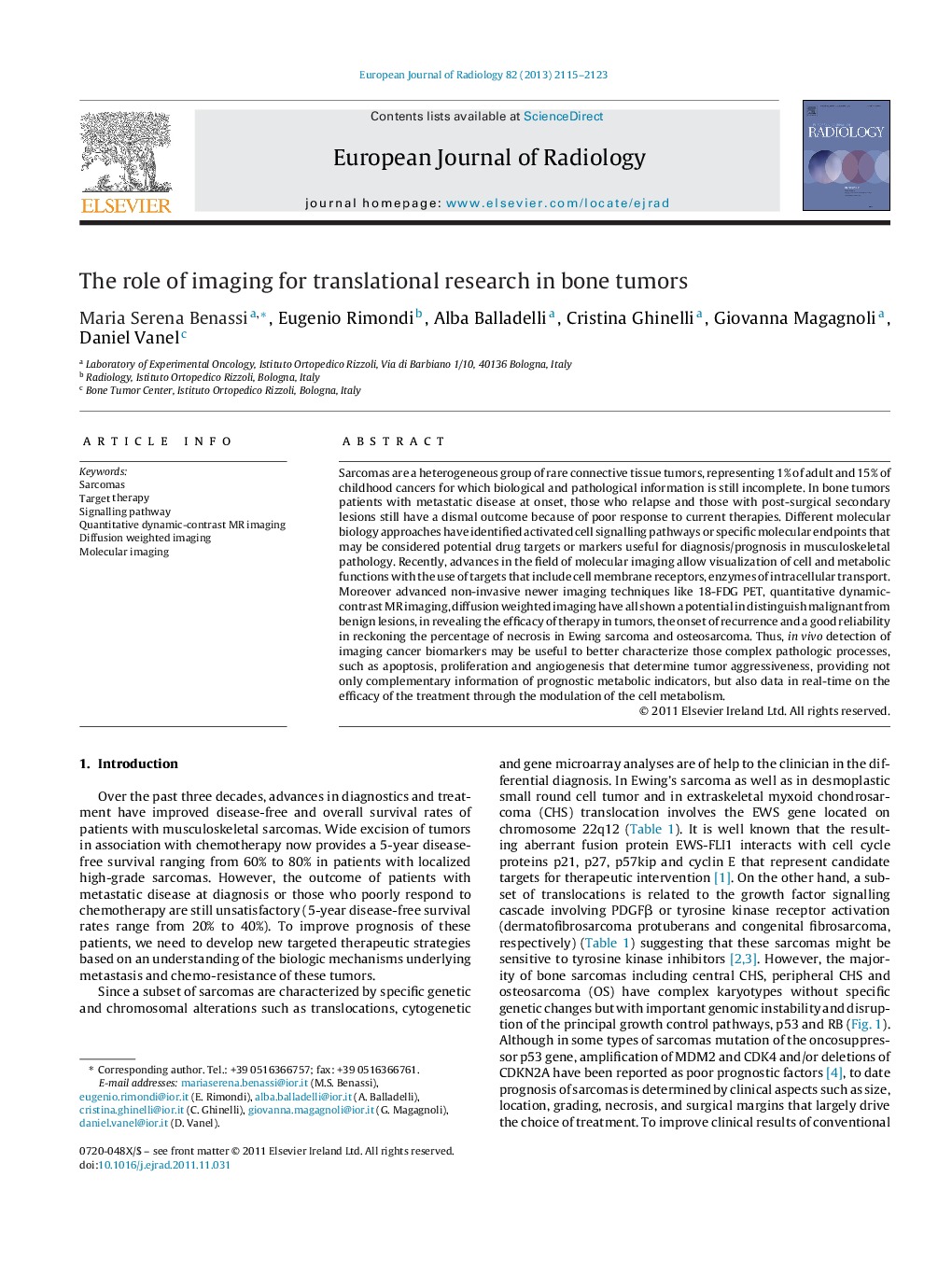| Article ID | Journal | Published Year | Pages | File Type |
|---|---|---|---|---|
| 6243999 | European Journal of Radiology | 2013 | 9 Pages |
Sarcomas are a heterogeneous group of rare connective tissue tumors, representing 1% of adult and 15% of childhood cancers for which biological and pathological information is still incomplete. In bone tumors patients with metastatic disease at onset, those who relapse and those with post-surgical secondary lesions still have a dismal outcome because of poor response to current therapies. Different molecular biology approaches have identified activated cell signalling pathways or specific molecular endpoints that may be considered potential drug targets or markers useful for diagnosis/prognosis in musculoskeletal pathology. Recently, advances in the field of molecular imaging allow visualization of cell and metabolic functions with the use of targets that include cell membrane receptors, enzymes of intracellular transport. Moreover advanced non-invasive newer imaging techniques like 18-FDG PET, quantitative dynamic-contrast MR imaging, diffusion weighted imaging have all shown a potential in distinguish malignant from benign lesions, in revealing the efficacy of therapy in tumors, the onset of recurrence and a good reliability in reckoning the percentage of necrosis in Ewing sarcoma and osteosarcoma. Thus, in vivo detection of imaging cancer biomarkers may be useful to better characterize those complex pathologic processes, such as apoptosis, proliferation and angiogenesis that determine tumor aggressiveness, providing not only complementary information of prognostic metabolic indicators, but also data in real-time on the efficacy of the treatment through the modulation of the cell metabolism.
